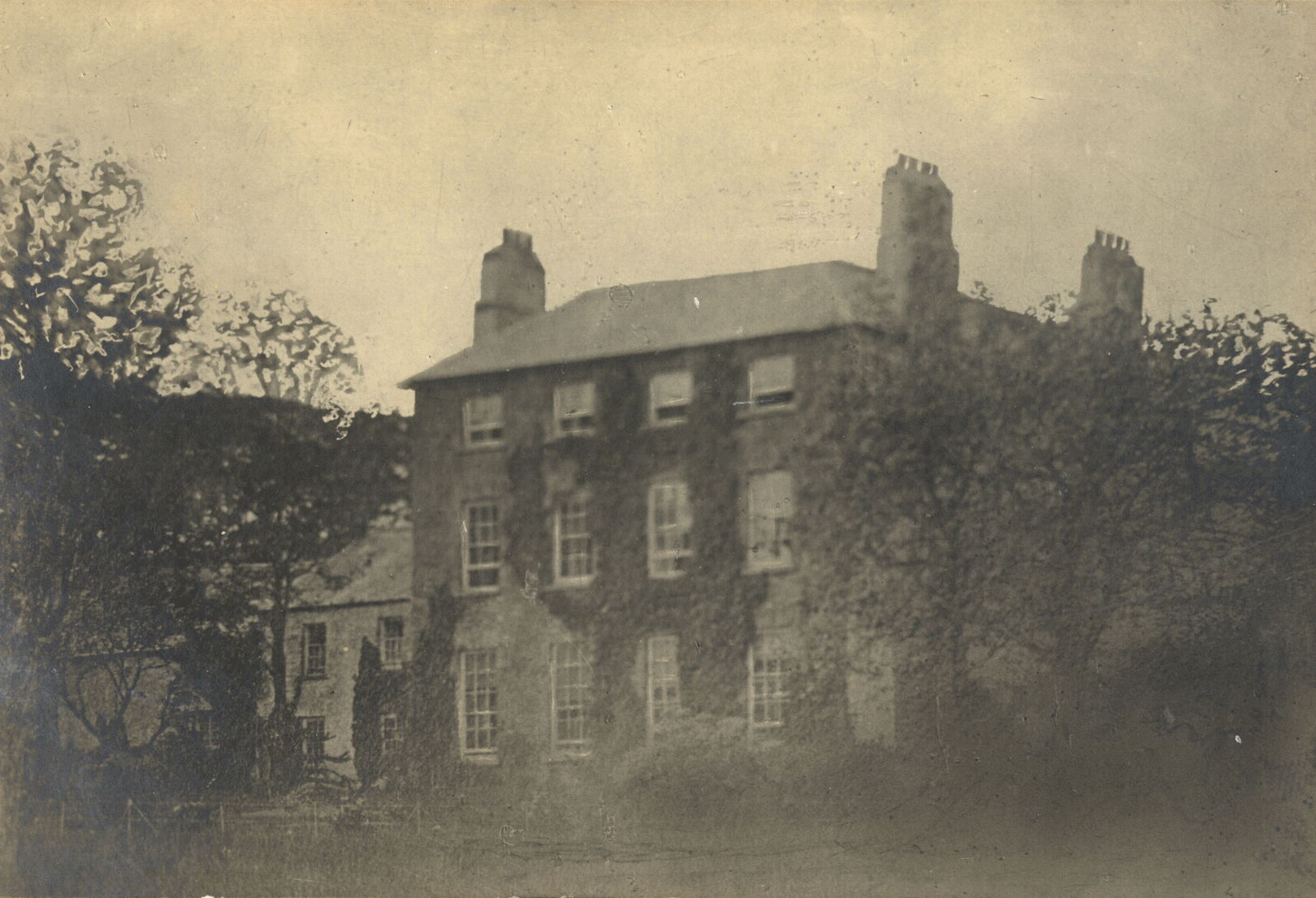Dingle peninsula, Co Kerry, Ireland
The Grove, Dingle

The Grove is on the left hand side of the road on the Spa Road in town and a
substantial ruin is visible.
The Earl of Osmond sold Dingle in about 1583 to the Knight of Kerry (Fitzgerald) who built a residence at The Grove,
near the foot of the Connor Pass road.
In 1770 it was rebuilt by Maurice Fitzgerald.
It went to the Townsend family in 1800 and then passed to the Hicksons.
In the 1840s it was the residence of John Hickson, the last Sovereign of Dingle.
It stood until the 1920s, but surprisingly little is remembered of it today.
I received a message a few years ago (1976) saying "The old Hickson home at Dingle was called The Grove, and still stands, though no longer
I think in Hickson hands, and my great grandfather [John Christopher Hickson (1848-1944)] who migrated to Australia from Killorglin in
the 1860s called his home in Sydney The Grove".
Hicksons found at The Grove:
- The dates are the approximate dates of birth
- 1683 Robert
- Seat: The Grove.
- In 1585, Queen Elizabeth granted a charter to Dingle but it was not issued until the fourth year of the reign of James I (1607).
Under this charter a corporation and Sovereign (equivalent to Mayor) came into existence.
The last Sovereign of Dingle, in 1820, was Robert Hickson of the Grove. [I think that this is an error
I believe that John, his great grandson, born 1782, was the last Sovereign]
- The History of the Dingle family is unknown. Burkes Landed Gentry states that in the early 1700s Robert Hickson of The Grove
married Barbara Trant and had John who married Ellen Rice ...
- I would hazard a guess that Robert was the grandson of the Rev Christopher, but that due to one part of the family
becoming Catholic there was a split in the family.
- 1712 John
- The son of Robert, above, he married Ellen Rice and they had a son, Robert FitzJohn in 1749
- 1749 Capt Robert FitzJohn
- The son of John (above), he married Judith Murray in 1776 and had eight children
- There seems to be some confusion as to whether he was a J.P. and High Sheriff for Kerry
- also whether he became deputy Lieutenant of Kerry (the dates given don't fit: 1749 and/or 1826)
- 1782 Capt John
- born 20 May 1782, died 22 August 1850, he married Barbara Mahony on 14th May 1813. (She lived to be 102)
- Described by Burke's Peerage for 1849 as the "present" representative of the Hickson family of Dingle.
- J.P., D.L., he served as High Sheriff in 1826.
- He was the last of the feudal Lords or Kings of Kerry.
- He had two family seats: The Grove and Ballintaggart.
- His crest includes the Murray Ducal Coronet.
- Some claim that he lived to be 104, having come to live in England during the Fenian riots, but 69 seems more likely (ref: Tony Wilson)
- They had nine children, at least one of whom, Marianne, is documented as having been born there (in 1834)
- 1834 Marianne
- 1842 Robert Rowan Purdon
- He notes that both The Grove and Ballintaggart were in the family in his young days, but were disposed of during the Fenian riots.
- He also notes that he had lots of relatives married to Sir Maurice Fitzgerald, Sir William Cox, Col Blennerhassett,
Lord Ventry, Col Tennant, etc.
- 1848 Brig-Gen Robert Albert
- Seat: The Grove
- Educated in Paris and Berlin
- From Who was Who, 1929-1940:
- C.B. 1900; late the Buffs, (East Kent Regiment), and Brig.-Gen. commanding Home Counties District.
Appointed ensign to the Buffs, 1867, giving up command of the 2nd Batt., 1900; served Relief of Chitral, 1895;
action of Marnagai (medal and clasp); S. African campaign, 1899-1900, in command of the Buffs;
action of Paardeberg (in command of the 13th Brigade); relief of Kimberley; Driefontein (despatches, medal with 4 clasps), C.B.
Publications: has contributed to the Illustrated London News, Graphic, and Daily Graphic.
Recreations: painting, and sports of all kinds; travelling.
Club: Naval and Military.
- From Burke's Landed Gentry, 1875:
an Officer 3rd foot.
Now of Ballintaggart.
Seat - Ballintaggart, Dingle, co. Kerry.
Mrs Bary says that no trace of The Grove is to be seen today, being replaced by housing and an hotel. It was at the foot of the Connor Pass,
near Dingle, but see above.
Kineigh House, Dromod, Waterville




